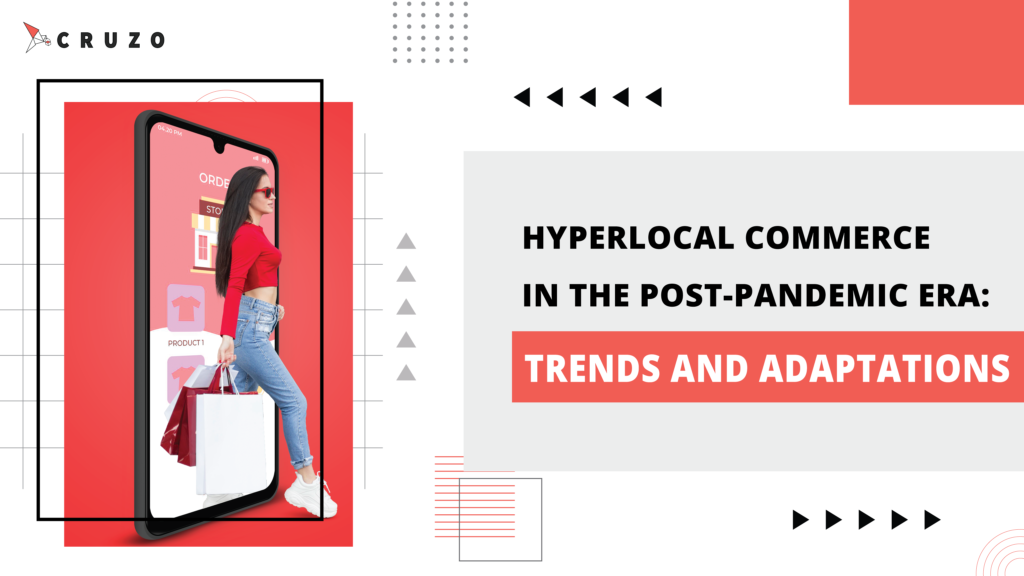
Hyperlocal commerce, which focuses on connecting local businesses with nearby consumers, has undergone significant changes and adaptations in the post-pandemic era. The COVID-19 pandemic accelerated several trends and introduced new dynamics to the hyperlocal commerce landscape. Here are some trends and adaptations in hyperlocal commerce in the post-pandemic era:
1. SaaS advancements
AI, blockchain, and big data advancements provide an incentive for the commerce sector to adapt to hyperlocal. Deliveries continue to become faster and more convenient, imbuing the shopping experience with the traditional warmth and familiarity of visiting neighborhood stores while sitting on their couch. Intelligent SaaS platforms are the way to go for ace hyperlocal. Only SaaS allows for the coordination of multi-point pick-ups and delivery locations while maintaining end-to-end visibility. The rise of Hyperlocal will be accelerated by more technological advancements in SaaS, which will make it more cost-effective and time-efficient.
2. Smartphone Democratization
During the pandemic, we were forced to rely on our mobile phones for both information and entertainment. It even aided boomers in joining the digitization bandwagon, and our increased presence in the digital space provided a platform for hyperlocal to shine. Because almost everyone owns a smartphone, e-commerce and Q-commerce have gained a strong foothold in even two-tier and three-tier cities. Mobile technology advancements and applications compatible with them will broaden the scope of hyperlocal.
3. Product Standardization
The consumer’s only concern when ordering perishable products online is consistent quality. Product standardization saves money and gives customers a stress-free shopping experience. Product standardization ensures that a product meets a predetermined quality standard, and its application to the dairy, egg, and meat industries, particularly for Q-commerce, has made it easier for consumers and vendors to defend against hyperlocal.
4. Logistics and Supply Chain Investment
Logistics is built on innovation and adaptation. The need to adapt to ever-changing consumer behavior, mobility constraints, demand and supply dynamics, and a volatile economy has resulted in an increase in hyperlocal deliveries, e-commerce, and Q-commerce, which has changed the way the industry operates. This continues to generate unprecedented challenges that must be met with creative solutions. Many entrepreneurs and visionaries are investing their time, efforts, and knowledge into specialized startups that make logistics and supply chain management seamless as a result of this solution-based growth and technological advancements. Angel investors, acquisition experts, and industry titans are also investing in these startups to support not only their growth, but also the growth of the hyperlocal sector.
5. Curbside Pickup and Delivery
The popularity of curbside pickup and delivery services surged during the pandemic. Consumers grew accustomed to the convenience of ordering online and picking up their purchases without entering a store. Many businesses have continued to offer these options, allowing them to cater to a broader customer base.
6. Sustainability and Community Engagement
Post-pandemic consumers are increasingly valuing sustainability and community engagement. Hyperlocal businesses are responding by sourcing locally, reducing waste, and engaging in community initiatives to build trust and loyalty.
7. Local Marketplaces
Local marketplaces and aggregators have gained prominence. These platforms bring together multiple local businesses under one digital roof, offering consumers a wide range of options for shopping, dining, or services.
8. Subscription Services
Some hyperlocal businesses have introduced subscription-based models to ensure a steady stream of revenue. This approach is particularly popular among fitness studios, local farms, and specialty stores.
9. Data Analytics
Hyperlocal businesses are harnessing data analytics tools to gain insights into customer behavior, inventory management, and marketing strategies. This data-driven approach helps them make informed decisions and optimize their operations.
In conclusion, hyperlocal commerce has adapted to the changing landscape of the post-pandemic era by embracing digital technologies, offering convenience and personalization, and prioritizing sustainability and community engagement. Businesses that continue to innovate and stay connected with their local communities are likely to thrive in this evolving environment. From E-commerce to Q-commerce, the growth graph for online commerce is positive, steep and set to touch new records owing to digitization. Because of digitization, the growth graph for online commerce is positive, steep, and poised to break new ground. The pandemic has also fueled the hyperlocal and e-Commerce booms. A growing number of consumers in metropolitan cities and small towns are changing their shopping habits and adapting to digitization. The sector has completely changed how it operates and continues to metamorphose and change on a daily basis based on real-time insights. The industry-agnostic hyperlocal delivery model benefits both the seller and the buyer by providing convenience and efficiency.
We at Cruzo, Launch your own Hyperlocal On-Demand Delivery Apps hassle-free with our complete SaaS technology suite. Experience the revolution — sign up for our exclusive FREE trial!









